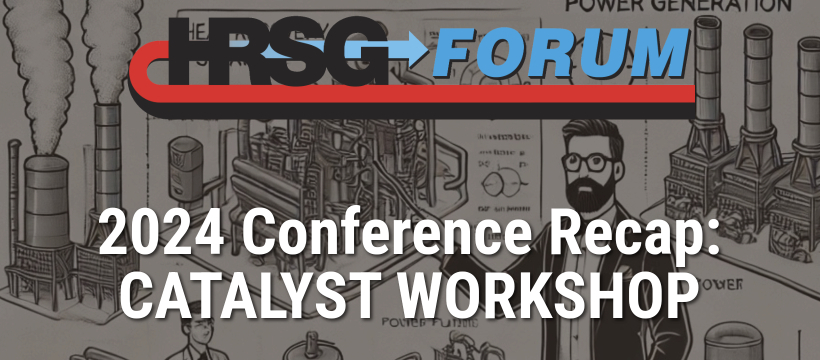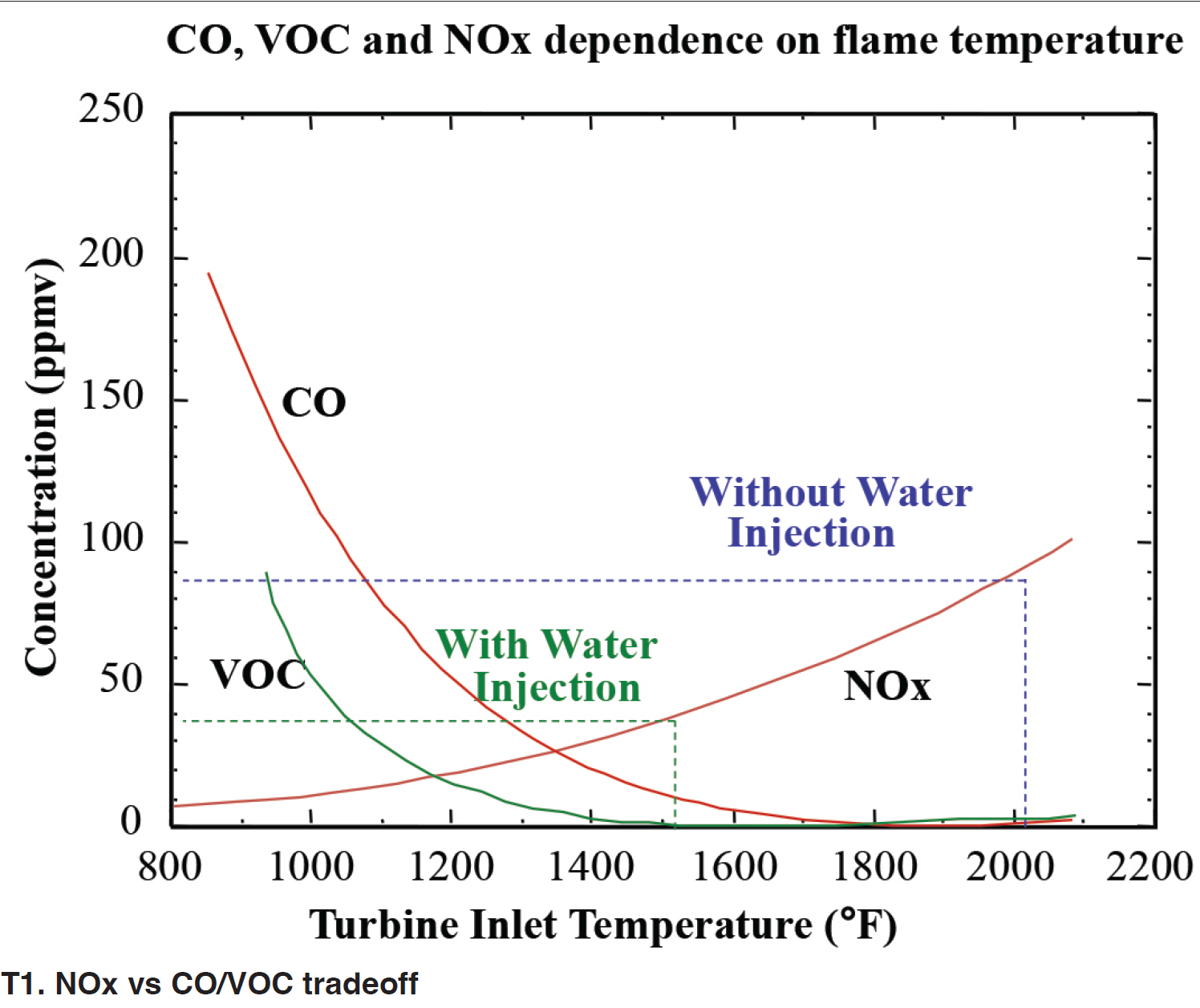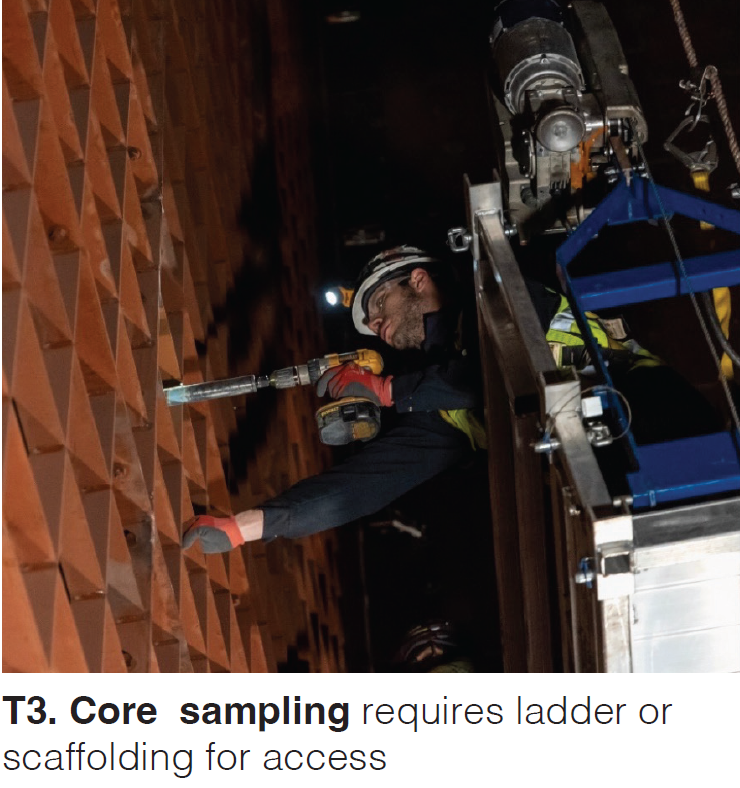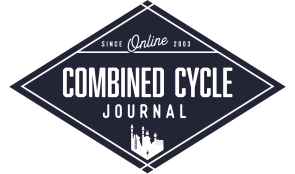
The HRSG Forum isn’t just another industry conference—it’s the only “user group” event where every session is open to all participants, fostering real-time exchange across users, OEMs, consultants, and solution providers. No sessions are restricted but are moderated by Bob Anderson (Competitive Power Resources) and Barry Dooley (Structural Integrity, UK) to ensure fruitful presentation and discussion outcomes. The 2024 HRSG Forum delivered critical technical insights on catalyst management, boiler feed pump reliability, flexible operation challenges, advanced metallurgy, and pressure part failures. With demand rising, resources tightening, and equipment aging, this report is packed with practical takeaways and cutting-edge updates to help you stay ahead. If you’re in the business of making HRSGs safer, cleaner, and more reliable, you won’t want to miss the 2025 HRSG Forum, July 21–25 in The Woodlands, TX. The following report is divided into four parts:
- Catalyst system O&M workshop
- Boiler feed pump O&M workshop
- HRSG Forum general session
- EPRI: HRSG/HEP technology transfer
Monday morning sessions covered CO and SCR catalyst system design, operation and maintenance. Andrew Toback, Environex, Inc., launched the training day with SCR and CO/VOC system training – a practical workshop for HRSG operation and maintenance. Environex (Malvern, PA) is a team of chemical engineers, scientists and laboratory technicians specializing in selective catalytic reduction (SCR) and oxidation catalysts of all types. They offer expertise in SCR/CO lifecycle management, catalyst testing, catalyst design, ammonia injection grid (AIG) tuning, troubleshooting and specialized training.
Below is a brief overview and selected details of what was covered:
Operations
Toback began with this: “You are operating a power plant, not an emissions factory. So, let’s talk about plant operations.”
He first offered a primer on NOx, explaining how it is formed principally when N2 reacts with O2 at temperatures above 2500F during fossil fuel combustion. He added that carbon monoxide (CO) and volatile organic compounds (VOCs) are formed from the partial combustion of carbon-based fuels. When CO competes with VOCs for free radicals, CO wins.
Looking forward, Toback added that formaldehyde is a specific partial combustion product “new on the docket” that is now being studied and regulated (40 CFR Part 60).
He then offered a look (Fig T1) at what he called a “NOx vs CO/VOC tradeoff” explaining how CO, VOCs and NOx are dependent on flame temperature. As he explained, CO and NOx work against each other.

This led to a chemistry review, and an interesting temperature chart depicting the fundamentals (Fig T2).
He spent a lot of time on ammonia slip and its relationship to inlet NOx explaining that:
- Higher inlet NOx generates more ammonia slip.
- Ammonia slip limits NOx conversion efficiency.
- Reducing inlet NOx can reduce ammonia slip and increase catalyst life cycle.
Therefore, turbine exit NOx matters. Again, the fundamentals:
- Higher turbine exit NOx emissions need more complicated SCRs.
- Ammonia distribution (grid) operation and maintenance are critical to meeting permit levels.

He then turned to alternative fuels and today’s hot-button topic, hydrogen, along with renewable natural gas. Problem areas include:
- Hydrogen:
- Transport (higher leakage rate than natural gas).
- Storage concerns.
- Higher combustion NOx.
- Renewable natural gas:
- Issues with transport.
- Siloxanes that can poison both SCR and CO catalysts.
He added that ammonia itself is considered a fuel, but produces high NOx and requires significant retrofit to the SCR system.
Toback then reviewed dual function catalyst configurations, pros and cons.
This was followed by factors that lead to non-ideal catalyst performance including non-uniform distribution and catalyst poisoning. “The most important factor,” he said, “is the distribution of ammonia to NOx.”
More specifically, plant operations leading to non-ideal performance include moisture exposure (some catalysts), poor or damaged seals, poor ammonia control, bypass, and load changes. “Low loads can reduce catalyst life,” he said. Catalyst deterioration factors include poisoning by K, As, Na, Ca and SO2; fouling by dust or insulation; and thermal phase changes.
He also covered duct burner impact and offered field experience on turndown.
Catalyst testing and life cycle
This section offered helpful visuals on how catalysts deactivate, with the following caution. “By the time you see ammonia slip escalate, it’s too late. You need periodic inspection and core sampling,” he said.
Catalyst core sampling has both pros and cons:
- Pros:
- Can be taken directly from bulk catalyst.
- Multiple sample locations possible.
- Works with any honeycomb catalyst.
- Cons:
- May not follow vendor’s guidelines.
- Ladder or scaffolding required (Fig T3).

He stressed the benefits of multiple sample testing.
He then reviewed commercial CO catalyst designs and plugging issues, including platinum migration.
This ended with a discussion about on-site rejuvenation of oxidation catalysts: wash catalyst modules, rinse clean, dry without damaging wash coat, and reinstall.
Questions at this point covered outage times (including CO catalyst wash), locations of core sampling, sampling frequency with cycling operation, and specifics of ammonia slip calculations.
Maintenance
Ammonia system maintenance covered the flow control unit, riser deposits, and plugging of grid and nozzles.
He began by stating that the vaporizer is the alarm, but rarely the root cause. With hot gas recirculation (HGR) or electric heaters, the sizing margin is tight to reduce parasitic load. When the ammonia flow exceeds design, the heat is not available to vaporize the ammonia and water.
He then stressed monitoring for elevated ammonia flow, which can be caused by one or more of the following:
- Bypass around the catalyst.
- Insufficient catalyst activity (poisoning or a high temperature event).
- Masking/fouling of SCR catalyst face.
- Injection grid plugging.
- Poor distribution.
As he explained, injection grid cleaning reduces backend cleaning frequency. Optimizing the ammonia-to-NOx ratio reduces ammonia slip and the resulting ammonia salts downstream.
SCR catalyst maintenance and troubleshooting began with a review of catalyst types, elements and geometries. Catalyst seals and allowable bypass followed, along with a discussion on additional sealing to minimize bypass. Catalyst plugging and some effects were reviewed including:
- Increased backpressure.
- Performance loss due to fouling/plugging.
- Possible catalyst shifting.
This ended with a discussion on SCR catalyst cleaning to reduce backpressure and increase system efficiency.
The bottom line: Catalyst cleaning lowers pressure drop and increases fuel economy (Fig T4).

“Every inch of backpressure is megawatts you are losing,” he stated. A secondary benefit of clean catalysts, he added, is reduced tube cleaning.
He concluded with an overview of ammonia injection grid tuning, including the pros and cons of permanent AIG grids and vertical probe ports.
Questions covered a variety of topics including restoration of old catalysts, the trend toward gluing blocks together, and on-site storage of catalysts for future use. One interesting point: storage can have an impact on warranties. CCJ



